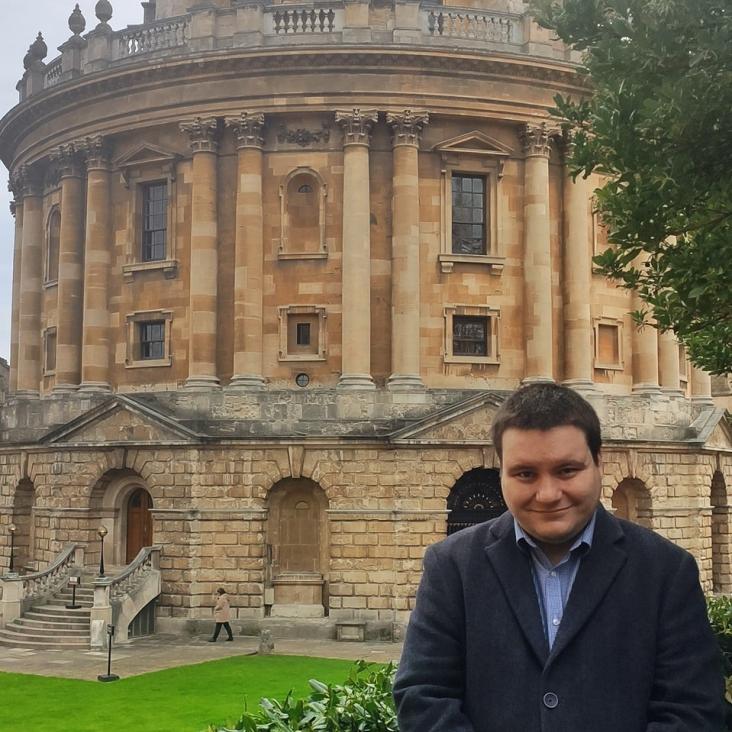Deep learning with photosensor timing information as a background rejection method for the Cherenkov Telescope Array
Astroparticle Physics Elsevier 129 (2021) 102579
Abstract:
New deep learning techniques present promising new analysis methods for Imaging Atmospheric Cherenkov Telescopes (IACTs) such as the upcoming Cherenkov Telescope Array (CTA). In particular, the use of Convolutional Neural Networks (CNNs) could provide a direct event classification method that uses the entire information contained within the Cherenkov shower image, bypassing the need to Hillas parameterise the image and allowing fast processing of the data. Existing work in this field has utilised images of the integrated charge from IACT camera photomultipliers, however the majority of current and upcoming generation IACT cameras have the capacity to read out the entire photosensor waveform following a trigger. As the arrival times of Cherenkov photons from Extensive Air Showers (EAS) at the camera plane are dependent upon the altitude of their emission and the impact distance from the telescope, these waveforms contain information potentially useful for IACT event classification. In this test-of-concept simulation study, we investigate the potential for using these camera pixel waveforms with new deep learning techniques as a background rejection method, against both proton and electron induced EAS. We find that a means of utilising their information is to create a set of seven additional 2-dimensional pixel maps of waveform parameters, to be fed into the machine learning algorithm along with the integrated charge image. Whilst we ultimately find that the only classification power against electrons is based upon event direction, methods based upon timing information appear to out-perform similar charge based methods for gamma/hadron separation. We also review existing methods of event classifications using a combination of deep learning and timing information in other astroparticle physics experiments.Detectability of Supernova remnants with the Southern Wide-field Gamma-ray Observatory
Journal of Cosmology and Astroparticle Physics IOP Publishing 2025:05 (2025) 096
Abstract:
Supernova remnants (SNRs) are likely sources of hadronic particle acceleration within our galaxy, contributing to the galactic cosmic ray flux. Next-generation instruments, such as the Southern Wide-field Gamma-ray Observatory (SWGO), will be of crucial importance in identifying new candidate SNRs. SWGO will observe two-thirds of the gamma-ray sky, covering the energy range between a few hundreds of GeV and a PeV. In this work, we apply a model of SNR evolution to a catalogue of SNRs in order to predict their gamma-ray spectra, explore the SNR emission phase space, and quantify detection prospects for SWGO. Finally, we validate our model for sources observed with current-generation instruments, fitting it using a Monte-Carlo Markov Chain technique to the observed gamma-ray emission from four SNRs. We anticipate that at least 6, and potentially as many as 11 SNRs will be detected by SWGO within 1 year.Observation of the gamma-ray binary HESS J0632+057 with the HESS, MAGIC, and VERITAS telescopes
Astrophysical Journal IOP Publishing 923:2 (2021) 241
Abstract:
The results of gamma-ray observations of the binary system HESS J0632 + 057 collected during 450 hr over 15 yr, between 2004 and 2019, are presented. Data taken with the atmospheric Cherenkov telescopes H.E.S.S., MAGIC, and VERITAS at energies above 350 GeV were used together with observations at X-ray energies obtained with Swift-XRT, Chandra, XMM-Newton, NuSTAR, and Suzaku. Some of these observations were accompanied by measurements of the Hα emission line. A significant detection of the modulation of the very high-energy gamma-ray fluxes with a period of 316.7 ± 4.4 days is reported, consistent with the period of 317.3 ± 0.7 days obtained with a refined analysis of X-ray data. The analysis of data from four orbital cycles with dense observational coverage reveals short-timescale variability, with flux-decay timescales of less than 20 days at very high energies. Flux variations observed over a timescale of several years indicate orbit-to-orbit variability. The analysis confirms the previously reported correlation of X-ray and gamma-ray emission from the system at very high significance, but cannot find any correlation of optical Hα parameters with fluxes at X-ray or gamma-ray energies in simultaneous observations. The key finding is that the emission of HESS J0632 + 057 in the X-ray and gamma-ray energy bands is highly variable on different timescales. The ratio of gamma-ray to X-ray flux shows the equality or even dominance of the gamma-ray energy range. This wealth of new data is interpreted taking into account the insufficient knowledge of the ephemeris of the system, and discussed in the context of results reported on other gamma-ray binary systems.Prospects for the Use of Photosensor Timing Information with Machine Learning Techniques in Background Rejection
Proceedings of Science 358 (2021)
Abstract:
Recent developments in machine learning (ML) techniques present a promising new analysis method for high-speed imaging in astroparticle physics experiments, for example with imaging atmospheric Cherenkov telescopes (IACTs). In particular, the use of timing information with new machine learning techniques provides a novel method for event classification. Previous work in this field has utilised images of the integrated charge from IACT camera photomultipliers, but the majority of current and upcoming IACT cameras have the capacity to read out the entire photo-sensor waveform following a trigger. As the arrival times of Cherenkov photons from extensive air showers (EAS) at the camera plane are dependent upon the altitude of their emission, these waveforms contain information useful for IACT event classification. In this work, we investigate the potential for using these waveforms with ML techniques, and find that a highly effective means of utilising their information is to create a set of seven additional two dimensional histograms of waveform parameters to be fed into the machine learning algorithm along with the integrated charge image. This appears to be superior to using only these new ML techniques with the waveform integrated charge alone. We also examine these timing-based ML techniques in the context of other experiments.Broadband Multi-wavelength Properties of M87 during the 2017 Event Horizon Telescope Campaign
The Astrophysical Journal Letters American Astronomical Society 911:1 (2021) l11


